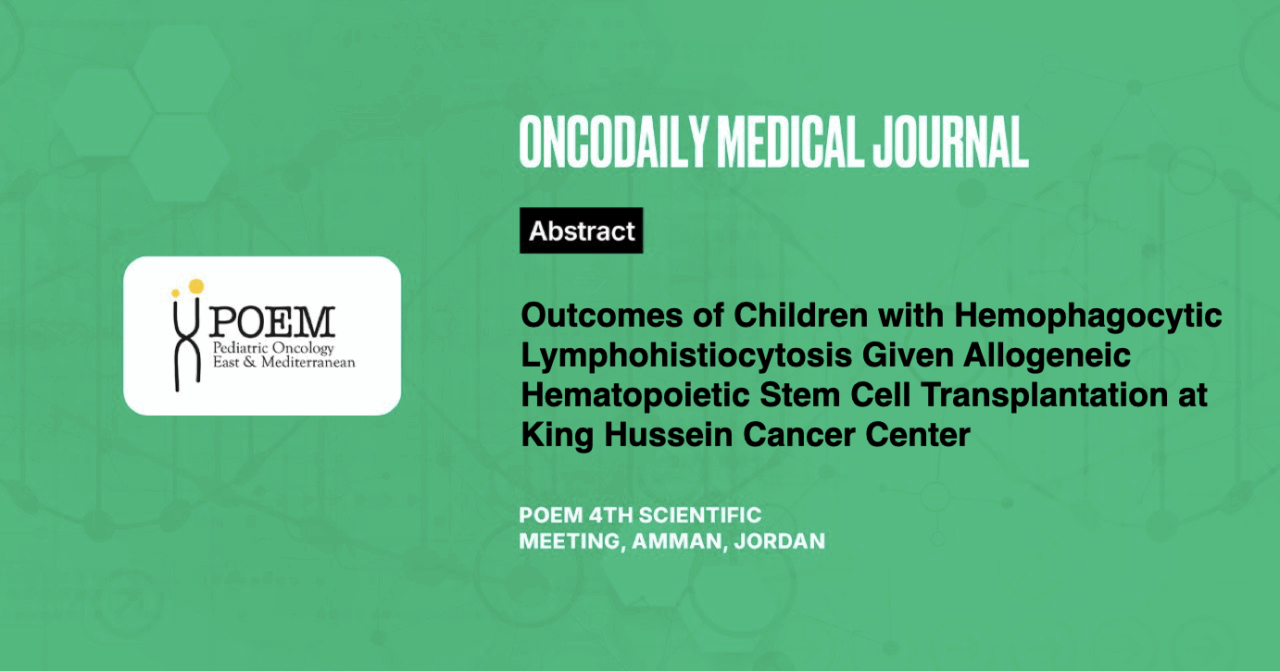Outcomes of Children with Hemophagocytic Lymphohistiocytosis Given Allogeneic Hematopoietic Stem Cell Transplantation at King Hussein Cancer Center
Abstract
Introduction: Hemophagocytic Lymphohistiocytosis (HLH) is a life-threatening hyperinflammatory syndrome. Allogeneic hematopoietic cell transplantation (HCT) is currently the only curative treatment for primary HLH, with 50-70% survival rates.
Methodology: We retrospectively analyzed the outcomes of a cohort of 24 patients with primary HLH treated at KHCC from 2003 to 2023.
Results: A genetic diagnosis was identified in 11 patients (46%) who had mutations in PRF1, RAB27A, STXBP2, XIAP, STX11, and IL2RA. The median age at diagnosis and transplant was 3.2 years (range 0.1-19.8) and 3.8 years (range 0.5-20.8), respectively. The median time from diagnosis to transplant was 7.6 months (range 0.9-19). Most patients underwent transplantation in complete remission (67%), 29% were in partial remission, and one was transplanted preemptively. All patients received myeloablative conditioning (fludarabine-based: n=15, thiotepa-based: n=7, VP16-based: n=6).
Donors included HLA-matched family (n=18), unrelated cord blood (n=4), and haploidentical donors (n=2). At a median follow-up of 59 months (range 0.9-204), the 3-year overall survival (OS) and event-free survival (EFS) were 82% and 73%, respectively. In univariate analysis, active disease at transplant was associated with worse EFS (HR:17.8, CI:2.04-155, p=0.009). Three patients died from transplant-related causes, and one from relapse. Fourteen patients developed acute GvHD, while two patients developed chronic GvHD. Among survivors, eight had full donor chimerism, six had stable mixed chimerism, two had unstable mixed chimerism, and three had chimerism <5%.
Conclusion: Primary HLH has a high mortality rate, making a definitive diagnosis essential since HCT remains the only curative treatment. Genetic testing is crucial for guiding therapy and facilitating early transplant referrals. Additionally, the presence of active disease at the time of transplant significantly worsens outcomes, highlighting the urgent need for timely intervention.





